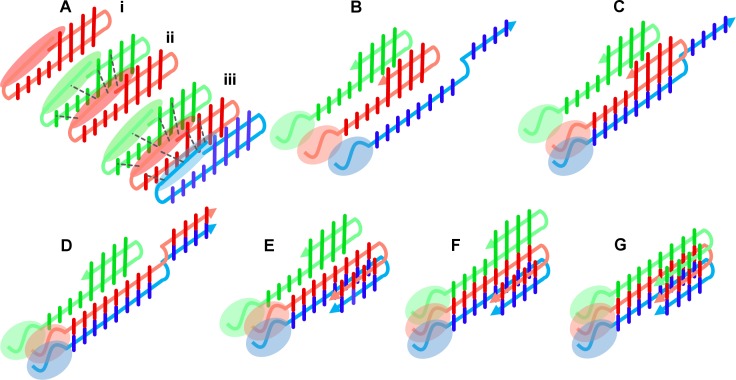Fig 9.
(A) Schematic representation of a build-up of a potential network of intermolecular interactions in oligomers upon transition from monomers (Ai) to dimers (Aii) and trimers (Aiii). Since N-terminus does not necessarily maintain a single conformation, most probably interacting in a non-specific way mediated by multiple chain arrangements, it cannot be represented as a single conformation. Dashed, grey lines mark new interactions, absent in monomers. Simplified scheme illustrating the main steps in a hypothetical scenario of a conversion of a stacked β-hairpin oligomer, shown in (Aiii), consisting of three units into a parallel β-structure (G). In the first step a single edge monomer (blue) opens into and extended state (B) and releases its intramolecular H-bond donors and acceptors for the intermolecular interactions with the free H-bonding partners of the neighboring hairpin (red, panel C). This provides the opportunity for propagation of intermolecular parallel H-bonds along the entire sequence between the first two monomers (D). A compact state can be regained (E) leading to dimeric nucleus of a parallel β-structure. This exposes the unsaturated potential H-bonding sites of the second hairpin (red) for parallel H-bonding with the next neighboring hairpin (green, panel F) and leading to incorporation of the third unit of the intermolecular parallel β-structure (G). Scheme was tested possible in molecular dynamics simulations (Figure H in S1 Appendix, S1 Movie).

